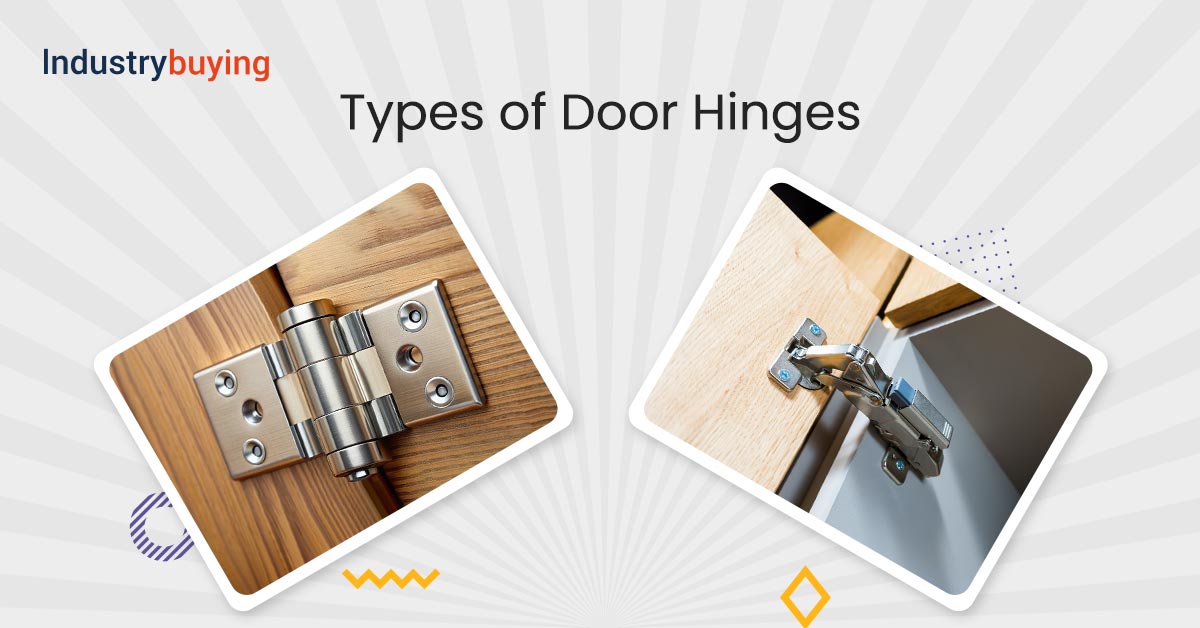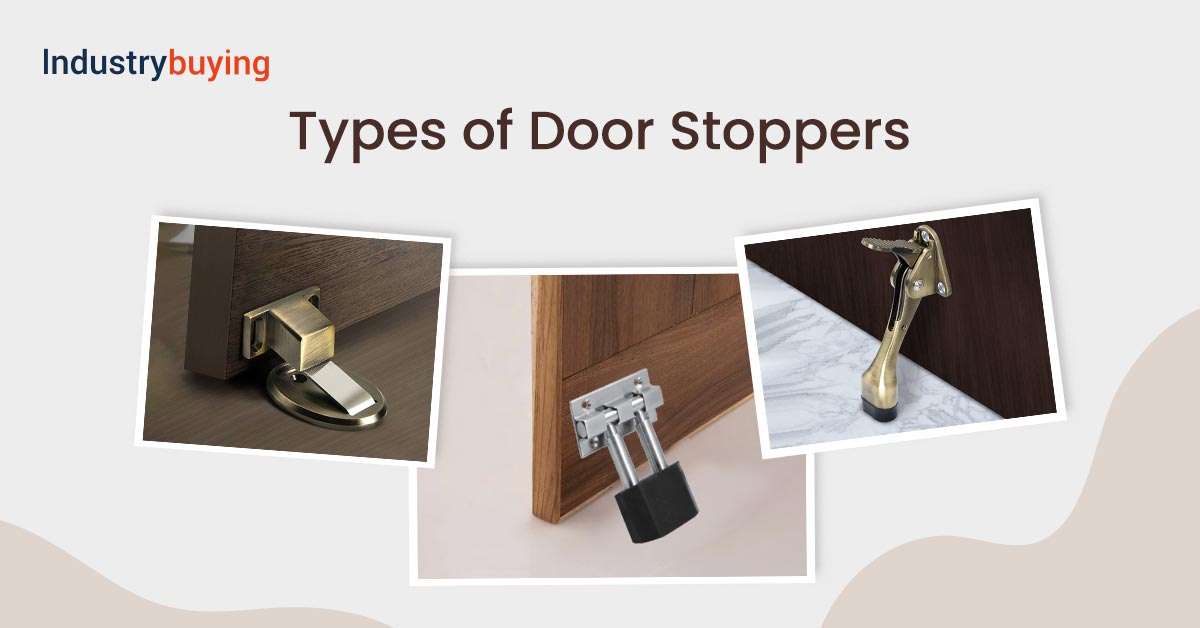11 Types of Door Hinges You Need to Know

Last Updated on October 23, 2024
Hinges are essential pieces of home hardware that help attach doors, gates, lids, and other parts to a frame so they can open and close. Since various types of door hinges might look similar, it is essential to understand the differences for proper installation and application. Read on to learn about the various types and their features.
Types of Door Hinges
While choosing door hinges for your home, you should consider some essential factors. Given below are the types and features:
- Butt Hinge
- Concealed Hinge
- Overlay Hinge
- Strap Hinge
- Gate Hinges
- Ball Bearing Hinges
- Continuous Hinges/Piano Hinges
- Offset Hinges
- Scissor Hinges/Knife Hinges
- Mounting Hinges
- Double-Action Spring Hinges
1. Butt Hinge
In this type of hinge, the two rectangular plates attached to the door and the frame butt up against each other. Generally, butt hinges are of 3 types- plain, ball bearing, and spring-loaded butt hinges. Often, butt hinges are made of metal, such as steel or brass. They are available in various sizes and finishes to suit different applications.
Suitability: Butt hinges are used for doors(indoors and outdoors). They are a great choice in both residential and commercial settings.
2. Concealed Hinge
As the name suggests, this hinge remains concealed and does not affect the door’s aesthetic look. It can either be self-closing or adjustable. They are available in a variety of finishes. Concealed hinges are used for various reasons, including appearance, security, adjustability and installation.
Suitability: They are best used with cabinets.
3. Overlay Hinge
Some doors lie on top of the cabinet opening rather than fitting into it. These doors are known as overlay hinges. They are easy to clean and less expensive than other types of hinges, but they might be more difficult to install.
Suitability: They are used for cabinets and cupboards.
4. Strap Hinge
Strap hinges are self-closing hinges that are best suited for ornamental furniture. The ones with broader leaves and larger pin diameters provide extra support. They can be found in many metals, including brass and stainless steel.
Suitability: They are best used with doors, gates, and cabinets.
5. Gate Hinges
These heavy-duty hinges have the capacity to support a weight of up to 75 pounds. They also have L-shaped pins that help swing the door open and close. They offer a limited amount of rotation.
Suitability: They are mostly used for barn gates, fences, and hefty doors.
6. Ball Bearing Hinges
These hinges have small ball bearings that help reduce friction and distribute the door’s weight evenly. The ball bearings here are present between the knuckles and remain hidden. They belong to a class of heavy-duty hinges.
Suitability: They are used for all residential, commercial, and industrial settings.
7. Continuous Hinges/Piano Hinges
Also called a piano hinge, these types of hinges are designed to match the full height of the door or cover. They distribute weight evenly over the entire length of the hinge. They are more stable than the traditional hinges.
Suitability: They are ideal for doors, cabinets, chests, pianos, and lids.
8. Offset Hinges
Also known as swing clear hinges, offset hinges enable doors to open further when the need arises. Take an example where you have to move a sofa through a broad enough door. Offset hinges are extremely helpful in such situations.
Suitability: They are highly helpful for patients with wheelchairs.
9. Scissor Hinges/Knife Hinges
Resembling the blades of a scissor, scissor hinges are attached to the pivot. Out of the two hinge leaves, one is mortised to the cabinet and the other to the cabinet. After installation of these door hinges only the pivot remains exposed.
Suitability: They are mostly used in restaurants.
10. Mounting Hinges
Mounting hinges find versatile uses and are installed in many ways. Here they are:
- Mortise- The hinge is attached to the door jamb and the door edge.
- Surface– The hinge is attached to the door’s surface.
- Screw On- The hinge is fixed to the cabinet’s surface.
- Press-in– Here, a special tool is used to fix the hinge to the cabinet.
Suitability: They are used in homes as well as commercial spaces.
11. Double-Action Spring Hinges
These hinges allow for a 180-degree rotation. They come with a spring that lets the door return to the center position. They allow the door to open in either direction with ease.
Suitability: They are mostly used in dining room doors.
Conclusion
- There are various door hinges available in the market so it becomes important to choose the ones best suited for your space.
- Invest in stainless steel hinges for outdoor use and hinges with a decorative finish for indoor use.
- Ensure that you choose the hinges that suit the frame of the door for proper installation.
FAQs
Various types of door hinges are Butt Hinges, Concealed Hinges, Overlay Hinges, Strap Hinges, Gate Hinges, Ball Bearing Hinges, Continuous Hinges, Offset Hinges, Scissor Hinges and Mounting Hinges.
Butt hinges are the most common type of hinge. Butt hinges are generally of 3 types- plain, ball, and spring-loaded butt hinges. They are usually made of metals like steel or brass.
Steel, stainless steel, aluminium, brass, plastic, and zinc alloy are commonly used materials in different types of door hinges.
Choose the hinges that suit your door’s specific dimensions and weight. Following these parameters will ensure smooth operation and durability. It is always helpful to keep some factors in focus before buying hinges. One of them is to understand that heavier doors need more hinges. Also, taller hinges offer more stability.

